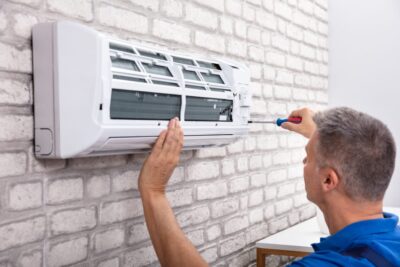Making the switch to solar power from the electric grid is daunting, but the benefits of using renewable energy are incredible and worth pursuing. An estimated 3 percent of the electricity produced in the United States of America comes from solar power, making it a viable option for powering your home’s appliances and lights.
Solar panels are arguably the most crucial component of the solar energy system. Not all types of solar panels are made equally, and you could get a raw deal if you don’t know the basics of each type.
The good news is that you’ve found the right solar energy guide to learn about the three types of solar panels for your residential solar needs. Keep reading this article to learn more today!
Monocrystalline Solar Panels
Monocrystalline solar panels are referred to as mono panels by solar companies. These panels use one pure piece of silicon to collect energy from the Sun. The odds are that the solar panels on your neighbor’s roof are mono solar panels.
They’re the go-to option for solar energy systems in small spaces. They also have a longer lifespan than your other solar panel options. You’ll find two options if you choose mono panels for your residential solar system.
The first is the PERC panel. The backs of the cells in PERC panels get an extra layer to boost conductivity within the panel. Expect to purchase PERC solar panels if you plan to get a solar energy system for your home.
Bifacial mono panels are your other option. They can absorb light on both sides of the cell and at a higher rate than PERC panels. This is the best option if you plan to put your solar panels in your yard rather than on your home’s roof.
Mono panels are distinctive because of their black appearance compared to other types of solar panels. The black design helps them blend in with rooftops much better than polycrystalline solar panels. They’re more prominent than thin-film panels but an excellent option for homeowners.
Benefits of Monocrystalline Solar Panels
The lifespan of monocrystalline solar panels is the most significant benefit you’ll enjoy. You can count on your mono panels to collect ample energy for your home for up to 25 years.
They also use the highest grade of silicon for better energy absorption. You’ll need less roof space to meet your home’s energy needs. You can visit this page to schedule your solar panel installation.
Polycrystalline Solar Panels
Polycrystalline solar panels are a panel from different times. It’s the early technology used to harness the energy the Sun provides. The quality is still excellent, but you’ll get solar panels for your home at a much lower price if you go with these types of solar panels rather than mono panels.
You won’t experience the same level of efficiency with these panels, but your system is much more affordable. They’re also not a great fit if you live in a hot climate like that of Texas or Arizona. They struggle to handle high temperatures compared to your other solar power options.
They’re a great fit for states like Virginia, Georgia, and Northern California. The temperatures aren’t too hot to overwhelm and damage your polycrystalline solar panels in those climates.
Poly solar panels look much different from mono panels because they appear blue to the human eye. It’s a stark contrast from the black solar panels that blend in with your home’s roof with ease when you purchase mono panels for your solar energy. The reality is the appearance is somewhat marbled when you look at poly panels up close.
Benefits of Polycrystalline Solar Panels
If you want a subtle solar energy system, you’re better off choosing mono solar panels. The performance is also worse with poly panels. They feature 60 cells, resulting in less energy absorption.
Still, they’re a cost-effective option if you’re sold on switching to solar power for your household needs. They also produce less waste compared to other panels during the production process. Avoid using them if you live in a hot climate.
Thin Film Solar Panels
Thin film solar panels are a recent development in the world of solar energy, but they’re worth exploring if you want a sleek solar energy system for your household to enjoy. They don’t offer the same efficiency as other types of solar panels, but they’re excellent when there are no size constraints.
You can also use thin film solar panels to great aplomb if you have a DIY project that requires a renewable energy source. You can provide solar power to a boat or camper van with ease using thin film solar panels and a strong adhesive. Even warehouses can use thin film panels since they fit well on thin metal roofs.
These panels are flat and black, making them blend in beautifully with roofs. They’re also flexible, so you’ll find it easy to use them anywhere with an open space to accommodate them. You won’t require scaffolding to install these solar panels and reap the benefits of solar power.
Benefits of Thin Film Solar Panels
You won’t need to worry about the climate if you choose to roll with thin film solar panels when you switch to solar power. They resist high temperatures with ease, making them a great option if you can’t afford mono panels.
They’re the most affordable option if you’re looking for solar panels for your home or a fun DIY project. They also weigh far less than your other solar panel options. The drawback is that you won’t enjoy the same level of efficiency with thin film solar panels.
Now You Know the Best Types of Solar Panels
Making the switch to solar energy for your household requires patience and research, as you don’t want to buy the wrong types of solar panels for your needs and climate. Mono panels are the best option for residential solar power since they’re durable and efficient, while poly panels offer an affordable alternative for cooler climates. Thin film solar panels are flexible, lightweight, and affordable.
Check out the rest of our blog page if you’re excited about more riveting blog posts like this!










